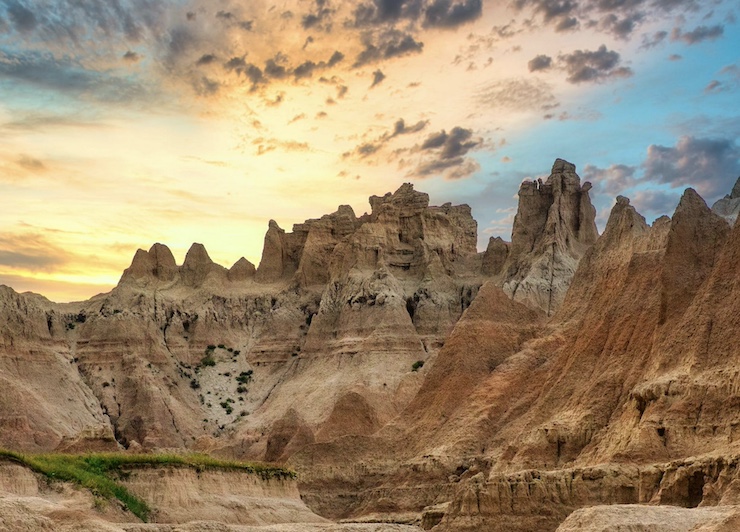Why Hasn’t America’s “Heartland” Taken to Drones?

Some regions of the United States are extremely “drone-friendly” – wide open Texas and neighboring Oklahoma, for example – while others, like clannish small town New England, are not. But some states that lie in the middle of the country and offer ripe opportunities for drone commerce are still resisting. South Dakota, Iowa, Kansas, Nebraska, Indiana and Illinois – are as close to the American “heartland” as you can get. But their antipathy toward drone commerce is striking.
The Fairfax, VA-based Mercatus Center ranks all US states on an annual scorecard that evaluates their “drone readiness.” Illinois, Iowa, Nebraska and South Dakota rank #41, #45, #46 and #48, respectively. Only Indiana, at #26, and Kansas at #32, break the mold – and both are found in the bottom half of the rankings.
What’s going on?
One obvious correlation is the role of agriculture in each state’s economy. It’s #1 in Iowa, Nebraska and South Dakota, and still at the top in Kansas Even Illinois and Indiana, which feature other key sectors like auto manufacturing and life sciences, still have disproportionate revenues generated by farming activity. And part of the problem may lie there.
Farming is relatively low-tech compared to other economic sectors. New cutting edge technologies have entered into some areas of large scale farming – plowing and irrigation, for example – but less so in the distribution of farm inputs. “Precision” agriculture – the calibrated targeting of seeds, fertilizers and pesticides to areas of a farm most in need – can boost crop yields, but the trend hasn’t caught on with the heartland’s tradition-bound farmers. Some training efforts are underway – usually through agricultural extension agencies – but they’re still in their infancy and operating on margins.
But isn’t agriculture also critically important in some leading drone industry states like North Dakota, Arkansas, Texas and Oklahoma? It is, but these states are also major oil and gas producing territories, which helps drive their economies. They’re also home to important US air forces bases and military research centers, which further fuelS their drone technology development. Other leading drone states, including Florida, North Carolina and Virginia, tend to be centers of defense activity, with large bases and military populations.
States in the American “heartland” just aren’t defense industry leaders, so they don’t attract the same kind of interest from government funding agencies and industry suppliers. And coincidentally or not, some of their economies, including those in Kansas and South Dakota, are among the slowest moving, and were hard hit by the pandemic. They won’t provide fertile soil in which to grow and nurture a fledgling drone industry – not without a bigger push.
Ultimately, that push has to come from the state’s political leadership – both the governor and the legislature. All of the leading drone commerce states have executive-level task forces in place to promote drone activity by state agencies, especially transportation and law enforcement, and to provide a supportive funding and regulatory environment for drone-related businesses. These states also tend to have drone-friendly state assemblies that have passed laws to compensate landowners for use of their property for drone overflights and insulate drone operators from charges of trespassing. Heartland states have no such proactive champions of drone commerce.
Which doesn’t mean that drones aren’t flying – they are. For example, Illinois last June passed a law to facilitate police use of drones for expanded law enforcement operations. That’s a huge step forward. And some heartland farmers are beginning to use specialized drones to maximize their farm yields – with great results. But as a poll conducted in Iowa recently noted, interest in farm drone use in the state far outpaces its actual deployment in the field. A lot more marketing and training support – and even purchase subsidies – will be needed to ensure that farmers in Iowa, Illinois or Kansas obtain the drone technology they need to keep their states competitive with China, India and other leading agricultural producers that have embraced drones wholeheartedly.
In the final analysis, the heartland states may well be the best bellwether of where the drone industry really stands in America. UAVs are no longer a science fiction fantasy or just an IT experiment. Their use is expanding rapidly into multiple public and private sector niches. Many more states are encouraging UAV commerce. But overall, we’re still in the classic “early adoption” phase of technology diffusion. We’re moving into the “early majority” phase – but the pace is still slow and uneven. Drones haven’t spilled out into the American heartland and entered the cultural mainstream. But when they do, it will be the clearest sign yet that UAVs have truly “arrived.”
|